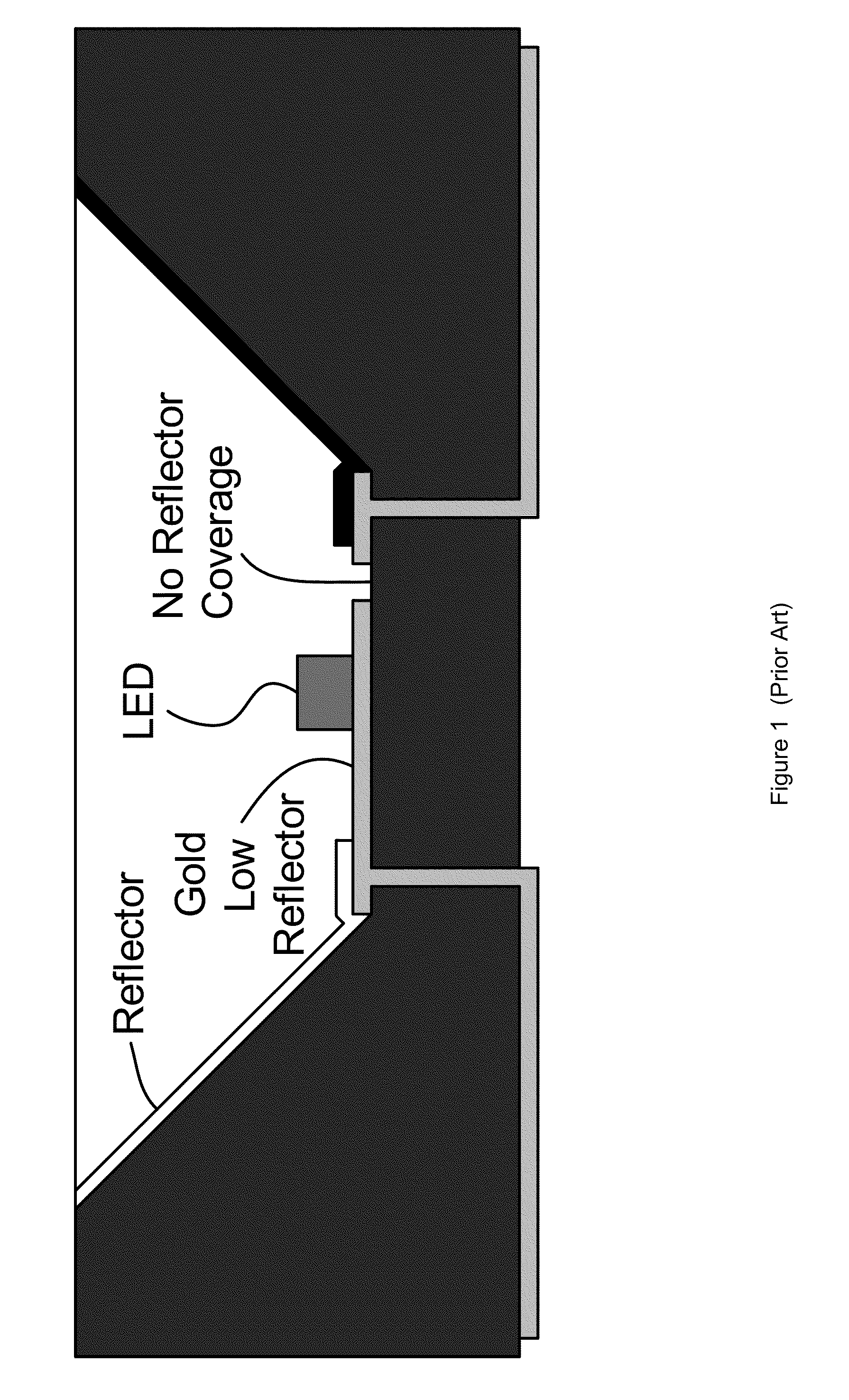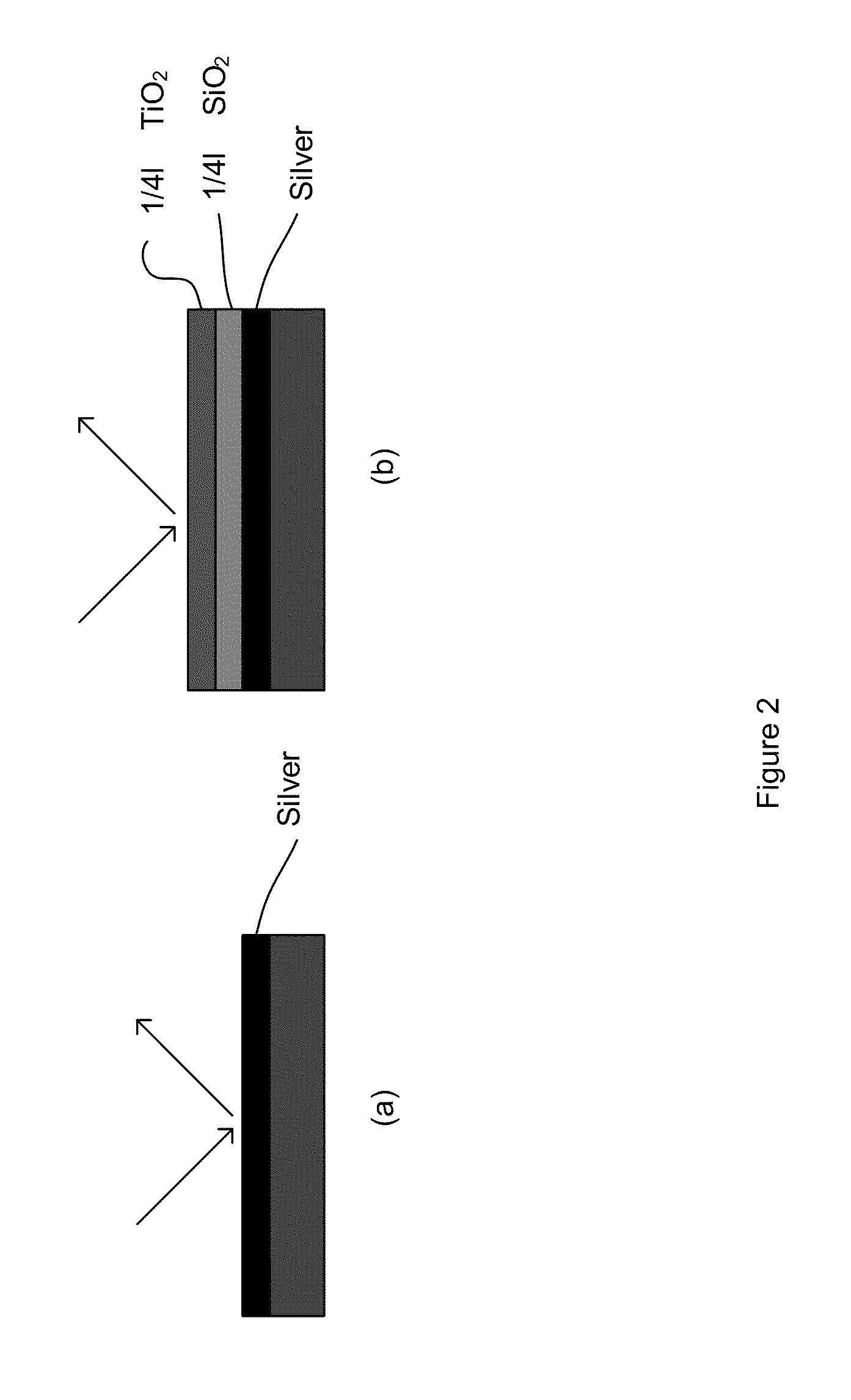System and method for LED packaging
a technology of led packaging and reflectors, which is applied in the direction of semiconductor devices, semiconductor/solid-state device details, electrical devices, etc., can solve the problems of wasting energy and wasting conventional edison light bulbs, and achieve the effects of improving the thermal conductivity of led packages, improving efficiency, and being easy to manufactur
- Summary
- Abstract
- Description
- Claims
- Application Information
AI Technical Summary
Benefits of technology
Problems solved by technology
Method used
Image
Examples
Embodiment Construction
[0026]As explained above, LED chips are often used as a light source. For LED chips to function, they are secured into a package and electrically coupled to an energy source. The optical efficiency of an LED package is related the reflectivity of the cavity surfaces. FIG. 1 is a simplified diagram illustrating a conventional LED package silicon cavity. In the silicon cavity package illustrated in FIG. 1, certain regions (such as the isolation areas between electrical contacts, portion of exposed gold) have low optical reflectivity. As a result, these areas lower the overall reflectivity of the cavity and thus, the optical efficiency of the package. In addition, conventional reflectors are often inadequate.
[0027]According to an embodiment, the invention provides an improved reflector. FIGS. 2(a) and 2(b) are simplified diagrams illustrating an enhancement reflector according to embodiments of the present invention. These diagrams are merely an example, which should not unduly limit t...
PUM
 Login to View More
Login to View More Abstract
Description
Claims
Application Information
 Login to View More
Login to View More - R&D
- Intellectual Property
- Life Sciences
- Materials
- Tech Scout
- Unparalleled Data Quality
- Higher Quality Content
- 60% Fewer Hallucinations
Browse by: Latest US Patents, China's latest patents, Technical Efficacy Thesaurus, Application Domain, Technology Topic, Popular Technical Reports.
© 2025 PatSnap. All rights reserved.Legal|Privacy policy|Modern Slavery Act Transparency Statement|Sitemap|About US| Contact US: help@patsnap.com



